Higher classification Molluscs Rank Class | Scientific name Monoplacophora | |
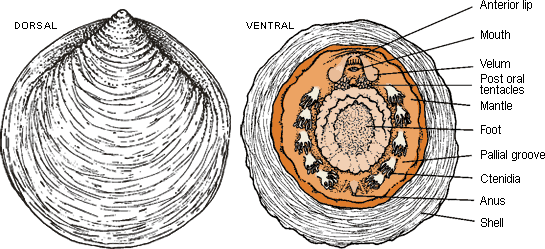 | ||
Similar Molluscs, Aplacophora, Tusk shell, Chiton, Solenogastres | ||
Monoplacophora, meaning "bearing one plate", is a polyphyletic superclass of molluscs with a cap-like shell now living at the bottom of the deep sea. Extant representatives were not recognized as such until 1952; previously they were known only from the fossil record.
Contents
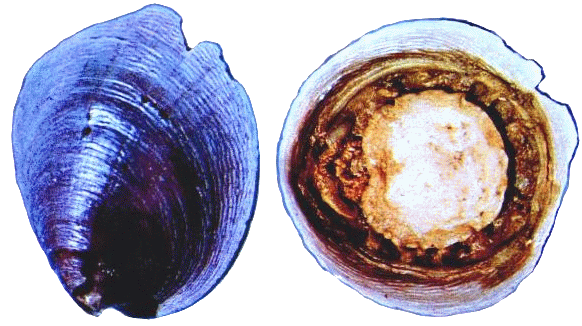
Although the shell of many monoplacophorans is limpet-like in shape, they are not gastropods and are not closely related to gastropods.
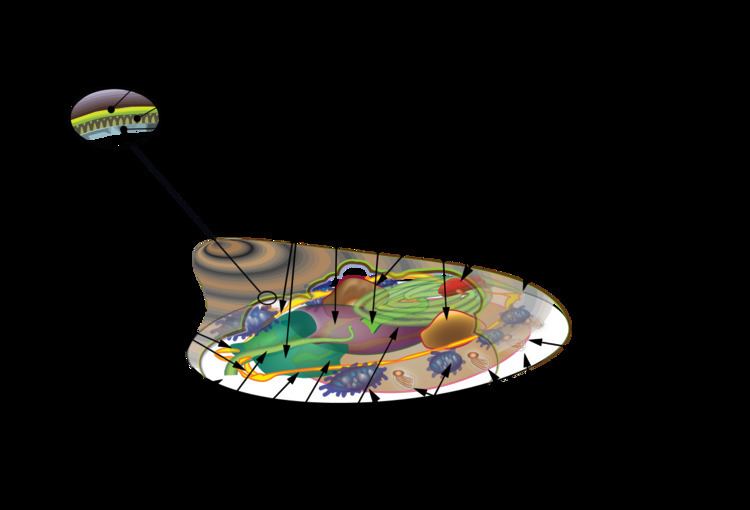
Definition
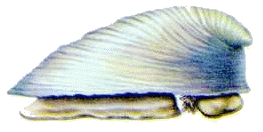
Discussion about monoplacophorans is made difficult by the slippery definition of the taxon; some authors take it to refer to all non-gastropod molluscs with a single shell, or all single-shelled molluscs with serially repeated units; whereas other workers restrict the definition to cap-shaped forms, excluding spiral and other shapes of shell. The inclusion of the gastropod-like Bellerophontoidea within the group is also contentious.
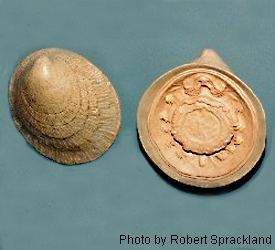
One attempt to resolve this confusion was to separate out the predominantly coiled helcionelloids from the traditional, cap-like tergomyans, this latter group containing extant Tryblidiids.
Anatomy and physiology
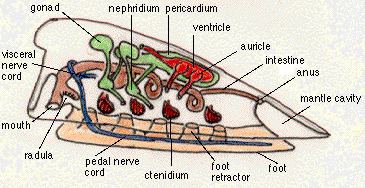
Monoplacophorans are univalved (though not gastropodal), limpet-shaped, and are untorted. They have a pseudometamerism of bilaterally symmetrical repeated organs and muscles. The extant members of the class live only in the deep ocean (the abyssal zone, the continental shelf, and the continental slope) at depths below 180 metres (590 ft). Cambrian forms predominately lived in shallow seas, whereas later Paleozoic forms are more commonly found in deeper waters with soft, muddy sea floors.
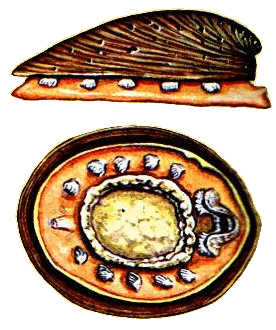
The repeated organs include from three to six pair of "gills" (actually ctenidia) located in a curved line along each side of the foot (though the number is not always considered definitive of a given species), and as many as six "kidneys" (actually nephridia). The tip or point of their low shells points forward rather than towards the back. The shell ranges from 3mm to 37mm in diameter depending on species. The mouth is located within the animal'S undeveloped head in front of its single large foot and contains a radula, a defining characteristic of the mollusca. They also have a cone-shaped stomach with a single crystalline style though no gastric shield. The intestines are long and make between four and six loops before reaching the posteriorly-positioned anus.
The sexes are separate with any given animal having two pair of either ovaries or testes connected to either the third or fourth pair of kidneys. One genus, Micropilina, has apparently been recorded as brooding young in the distal oviduct and pallial groove, releasing the young when approximately 300 micrometers in diameter.
Phylogenetic position
In 2006 a molecular study on Laevipilina antarctica suggested that extant Monoplacophora and Polyplacophora form a well-supported clade with the researched Neopilina closest to the chitons. The two classes in this new clade, with the proposed name Serialia, all show a variable number of serially repeated gills and eight sets of dorsoventral pedal retractor muscles.
This study contradicts the fossil evidence, which suggests that the Monoplacophora are the sister group to the remainder of the conchiferans, and that the cephalopods (squids, octopuses, and relatives) arose from within the monoplacophoran lineage. However, some authors dispute this view and do not necessarily see modern Monoplacophora as related to their fossil ancestors.
The concept of Serialia is supported by other molecular studies.
The fossil record does indicate that the ancestral mollusc was monoplacophoran-like and that the Polyplacophora arose from within the Monoplacophora – not the other way round; this could be reconciled if a secondary loss of shells caused a monoplacophoran body form to reappear secondarily. This is plausible: modern monoplacophorans are not closely related to vent-dwelling representatives from the Silurian, at least.
Cambrian monoplacophoran Knightoconus antarcticus is thought to be an ancestor to the cephalopods.
Fossil species
Families:
The taxonomy of the Gastropoda by Bouchet & Rocroi, 2005 also contains Paleozoic molluscs of uncertain systematic position. It is not known whether these were gastropods or monoplacophorans.
